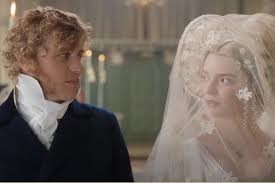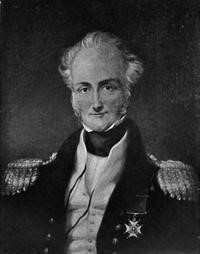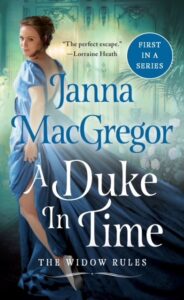Consanguinity and Affinity – Brother, Sisters, and Cousins—One of These Things is Not Like the Others
by Janna MacGregor
In the first book of my Widow Rules series, A Duke in Time, a war hero duke falls in love with his stepbrother’s wife. Could he legally marry her? Under the Church of England’s rules of consanguinity and affinity, a brother couldn’t marry his brother’s widow. Nor could a sister marry her sister’s widower. Yet they could marry first cousins.
But what about step-brothers and step-sisters? Do these rules apply in the blended families of yesteryears?
Let’s take a look at a few brave couples who challenged the Church of England and the laws that stood in the way of their true love and happiness.
Way back in the day of merry ol’ England, the Church of England had pretty strict rules of who could marry whom, particularly as it related to family. Let’s get some definitions out of the way to make this a little easier to understand.
Consanguinity basically means two people are related by blood relation and that they share common ancestors. Affinity is a relationship by marriage.
When people married in violation of the Church of England’s prohibition of consanguinity or affinity, the marriages were either void or voidable. If a marriage is void, it’s invalid and illegal. End of story. Any children born of such union were illegitimate.
If a marriage is voidable, then it’s valid. However, it could be annulled if an interested party successfully challenged the marriage while the husband and wife were still alive.
Let’s talk specifics. You could marry your cousin. In Pride and Prejudice, that was why Lady Catherine De Bourgh clearly circled the wagons around her nephew Fitzwilliam Darcy and encouraged him to marry her daughter, Darcy’s cousin, instead of Elizabeth Bennett. Darcy’s marriage to his cousin would have ensured that his lovely home and wealth would stay within the family. Heck, even King George IV, the former Prince Regent, married his first cousin, Queen Caroline. We all know how that turned out. They couldn’t stand one another.

Do I hear any “ewws?” I can’t imagine marrying any of my cousins, but it happened all the time during the Regency. Marrying within the family was a way of keeping the hard-earned wealth intact. However, the laws were less lenient for other cases. For instance, a sister couldn’t marry a brother, and a brother couldn’t marry a sister because of incest.
By now, you’re curling your lip.
Incest is taboo and illegal in most countries. But what if a man wants to marry his brother’s widow or vice versa? That’s a problem for our Regency couple, but not an insurmountable one. Here’s a little background: in the Regency period when a woman married, she was considered to become “one flesh” with her husband. Legally, she lost practically all rights when she said, “I do.” Usually, her property belonged to her husband after the marriage (unless she and her family had been clever enough to put it in trust or had to some pretty airtight marriage settlements.) The “one flesh” language meant that her husband had the legal authority to decide all financial and moral decisions on her behalf. Under the law, she had to grin and bear it.
But I digress.
When a woman became “one with her husband” that meant she became sisters to her brother-in-law according to the church. If her spouse died, she could not marry her brother-in-law even though there was not a speck of blood or in some instances, common ancestry shared between them. These are the rules of affinity that the Church of England forbid. Here’s a detailed list.
A Table of Kindred and Affinity in The Book of Common Prayer (1662.)
A Table of Kindred and Affinity,
Wherein Whosoever Are Related Are Forbidden
by the Church of England to Marry Together.
|
In this Table the term ‘brother’ includes a brother of the half-blood, and the term ‘sister’ includes a sister of the half-blood.
Remember that scene in Jane Austen’s Emma where Mr. Knightley says, “Brother and Sister! No, indeed.” This exclamation comes after Emma Woodhouse’s comment that they are not so much “brother and sister” as to make a recent dance that they’d shared unseemly.
Why did she say that? Remember that her sister had married Knightley’s brother. Emma mistakenly believed that any relationship outside of friendship would be verboten with her Mr. Knightley. If her sister died, Emma couldn’t marry her brother-in-law. Same was true for Mr. George Knightley. He couldn’t marry Emma’s sister if his brother died. But there was no such relationship between Emma and Knightley. So Emma and her dear Mr. Knightley didn’t run afoul of the Church of England’s strict rules when they pledged their troths to one another.

Yet, it’s a telling tidbit about our dearly loved Jane Austen. Her own brother Charles John Austen married his deceased wife Fanny Palmer’s sister, Miss Harriett Palmer, making the marriage voidable. But his marriage survived. How, you ask?

Because under the Ecclesiastical Court, a voidable marriage could only be struck if someone. . .really, anyone complained. This usually happened when a greedy relative sought to ensure they weren’t cut from inheriting the husband’s property. In Charles’ case above, no one complained because he and Harriett were as poor as church mice.
In A Duke in Time, the male protagonist, Christian, the Duke of Randford, falls in love with his deceased half-brother’s wife, Katherine Vareck. If they married, then their voidable marriage could be declared void if a nasty relative complained. For that very reason, I purposely made certain that Christian had no heir presumptive in the woodwork who would have cause to complain about the marriage. A voided marriage between the couple would have instantly made any children born of the marriage declared bastards and incapable of inheriting from their father. A definite stain on Christian and Katherine’s happily-ever-after.
English history is rife with these types of marriages. In 1835, the Seventh Duke of Beaufort’s marriage to his dead wife’s half sister was brought before Parliament to legitimize the marriage to ensure his heir inherited the dukedom. A parliamentary bill was hastily composed which resulted in the Marriage Act of 1835. It declared that any prior voidable marriages similar to the Duke of Beaufort’s would be declared legal if not already void. However, any English marriage that violated the rules of affinity after August 31, 1835 would be void.
When you come across various plots with these twists, just remember that there’s more to a Regency marriage than meets the eye in our cherished romances.
 Released June 29, 2021
Released June 29, 2021
Available Everywhere!
Check out Janna’s website for all buy links!
| “If…looking for something new with Austen’s spirit, humor, and dashing heroes, they can’t do better than MacGregor.” – Entertainment Weekly
A Duke in Time is the first book in a three-story arc that will have you rooting for leading heroines, searching for lost dowries, and falling for swoon-worthy heroes. Katherine Vareck is in for the shock of her life when she learns upon her husband Meri’s accidental death that he had married two other women. Her entire business, along with a once-in-a-lifetime chance to be a royal supplier, is everything she’s been working for and now could be destroyed if word leaks about the three wives. Meri’s far more upstanding brother, Christian, Duke of Randford has no earthly clue how to be of assistance. He spent the better part of his adult years avoiding Meri and the rest of his good-for-nothing family, so to be dragged back into the fold is…problematic. Even more so is the intrepid and beautiful Katherine, whom he cannot be falling for because she’s Meri’s widow. Or can he? With a textile business to run and a strong friendship forming with Meri’s two other wives, Katherine doesn’t have time for much else. But there’s something about the warm, but compellingly taciturn Christian that draws her to him. When an opportunity to partner in a business venture brings them even closer, they’ll have to face their pasts if they want to share each other’s hearts and futures. |
Janna MacGregor was born and raised in the bootheel of Missouri. She credits her darling mother for introducing her to the happily-ever-after world of romance novels. Janna writes stories where compelling and powerful heroines meet and fall in  love with their equally matched heroes. She is the mother of triplets and lives in Kansas City with her very own dashing rogue, and a smug, but not surprisingly, perfect pug. She loves to hear from readers.
love with their equally matched heroes. She is the mother of triplets and lives in Kansas City with her very own dashing rogue, and a smug, but not surprisingly, perfect pug. She loves to hear from readers.
Visit her at https://www.JannaMacGregor.com.
Facebook: Janna MacGregor
Twitter: @JannaMacGregor
Facebook: Janna MacGregor
Instagram: @jannamacgregor
Sign up for her newsletter at https://www.JannaMacGregor.com